-
Latin America
Latin America
- Countries (hidden space)
- Galapagos & Ecuador
- Guatemala
- Mexico
- Panama
- Peru
- Popular Attractions
- Machu Picchu
- Inca Trail
- Easter Island
- Galapagos Islands
- Patagonia
- Rio de Janeiro
- Iguazu Falls
-
Africa
Africa
- Spacer Africa
- South Africa
- Zimbabwe
- Popular Attractions
- Cape Town
- Okavango Delta
- Sossusvlei Dunes
- Victoria Falls
- The Kruger
- The Garden Route
- Masai Mara
-
Asia & Middle East
Asia & Middle East
- Asia
- Borneo (Malaysia)
- Cambodia
- India
- Japan
- Middle East
- Jordan
- Spacer Asia
- Laos
- Sri Lanka
- Uzbekistan
- Vietnam
- Popular Attractions
- Taj Mahal
- Lion Rock (Sigiriya)
- Angkor Wat
- Ha Long Bay
- Kyoto
- Petra
-
Destinations
- Latin America
- Argentina
- Bolivia
- Brazil
- Chile
- Colombia
- Costa Rica
- Galapagos & Ecuador
- Guatemala
- Mexico
- Panama
- Peru
- Asia
- Borneo (Malaysia)
- Cambodia
- India
- Japan
- Laos
- Sri Lanka
- Uzbekistan
- Vietnam
- Middle East
- Jordan
- Southern & East Africa
- Botswana
- Kenya
- Namibia
- South Africa
- Zimbabwe
- Contact Us
-
About
About
Llama Travel provides high quality holidays at the lowest possible prices.
99% recommend us Lower prices - guaranteed Financially protected by ATOL
The Llama Travel Blog
10 Reasons to Visit Vietnam
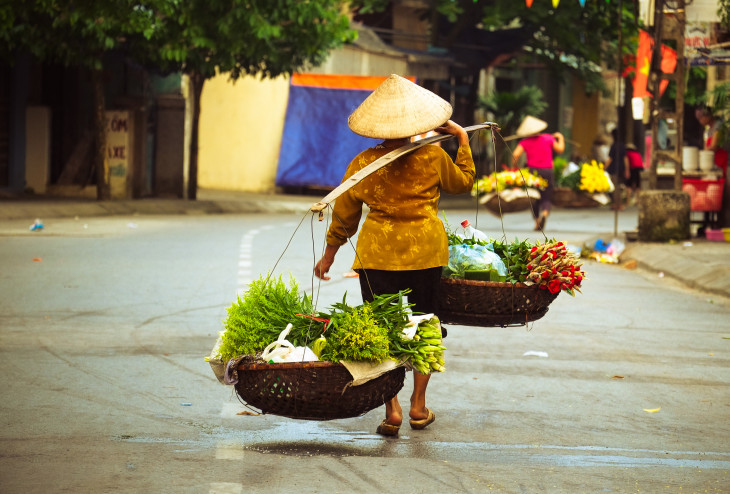
Vietnam has become a must-see destination, offering incredible scenery, history, and a unique culture, and is home to eight UNESCO World Heritage Sites. From the ancient imperial city of Hue, to the stunning limestone islets of Lan Ha Bay, these sites offer a glimpse into the country's past and natural beauty. The country captivates travellers with its charm and authenticity. If you’re unsure whether Vietnam would be a great holiday spot for you, here are 10 reasons why you should consider visiting Vietnam for your next trip.
1. Lan Ha Bay
Each year, millions of tourists are drawn to Vietnam from the far corners of the world, their minds firmly fixed on seeing the legendary beauty of Halong Bay, a renowned UNESCO World Heritage Site, sitting in the Gulf of Tonkin. For a slightly more tranquil experience, many visitors opt for Lan Ha Bay, the more-secluded neighbour of Ha Long Bay, features stunning limestone islets rising from clear emerald waters. It is the smallest of the three primary bays in the area and remains an untouched gem with isolated spots, pristine waters, and caves to explore. Lan Ha Bay offers some of Mother Nature's best views, with landscapes that took over 500 million years to form.
Lan Ha Bay is popular, so pre-booking an overnight cruise is recommended. This is included in all of our Vietnam itineraries – check here for full information on our Vietnam trips. You'll board the ship and enjoy lunch as you begin your cruise through the mysterious rocky pillars. Here you’ll have an opportunity to use onboard kayaks, but a reasonable level of competence is advised. In the late afternoon, there’s a cooking demonstration to learn how to make Vietnam’s famous spring rolls. Then perhaps enjoy the sunset from the deck with a cocktail.
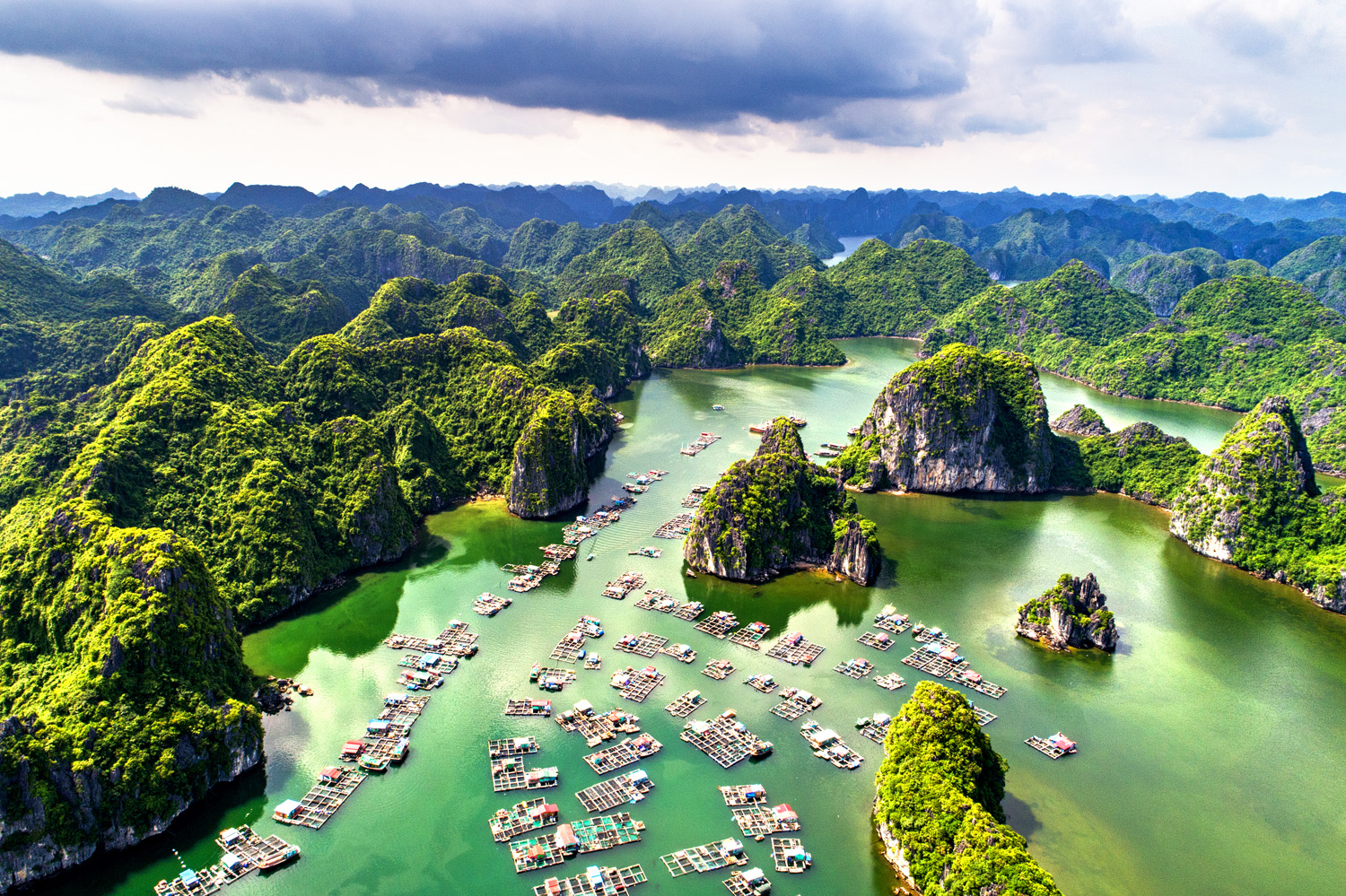
Lan Ha Bay Fishing Village
2. Ho Chi Minh City
Few cities in Southeast Asia are as captivating as Ho Chi Minh City. Formerly known as Saigon, this vibrant metropolis is rich with historical landmarks and museums. Just outside the city, you can explore the infamous Cu Chi Tunnels, dug by the Viet Cong during the Vietnam War. Within the city, notable sites include the Notre Dame Cathedral, constructed by French colonists, and the Independence Palace, a key landmark where significant events of the Vietnam War unfolded.
The Cu Chi Tunnels, about a 90-minute drive from Ho Chi Minh City, offer extraordinary insights into the ingenuity and resilience of the Vietnamese people. Spanning over 250 kilometres, these tunnels were a critical component of the Viet Cong’s guerrilla warfare strategy. Initially dug during the fight for independence against French colonial rule, they feature living quarters, storage rooms, kitchens, and hospitals, all cleverly camouflaged. Visitors have the opportunity to clamber through the tunnels, although this is up to you. For those who prefer not to go underground, there are plenty of easily accessible rooms and excavated areas to visit.
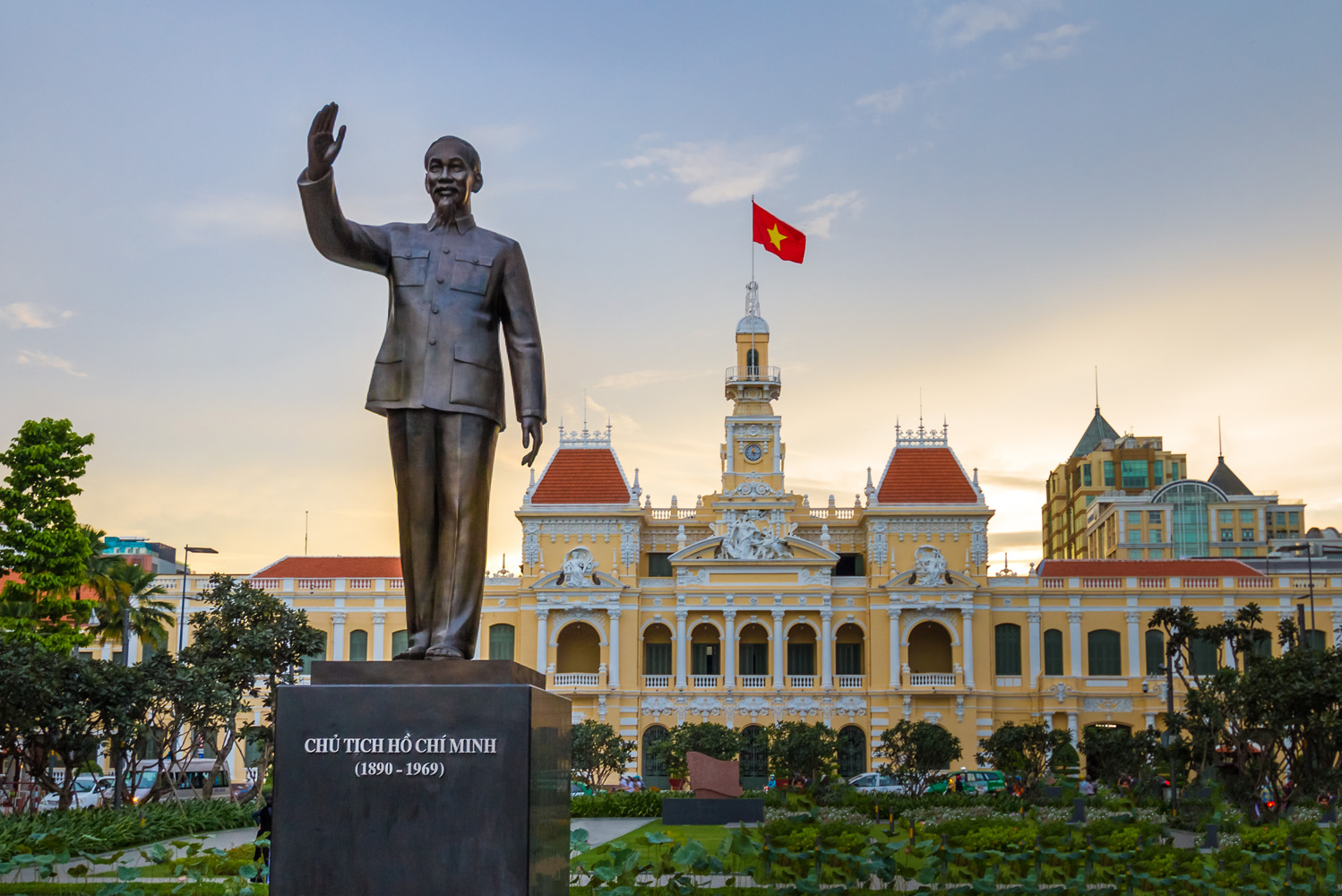
City Hall, Ho Chi Minh
3. Hanoi’s atmosphere
Hanoi, Vietnam’s capital, is a mix of tradition and modernity. At its heart lies the Old Quarter, an amalgamation of narrow lanes and shophouses dating back to the 15th century. The Old Quarter is famous for its market streets, these are named after what they used to sell. For example, Hang Bạc is packed with jewellery shops, while Han Gai is famous for its silk and tailoring.
A significant cultural site in the Old Quarter is the Temple of Literature, founded in 1070 as Vietnam’s first national university. Dedicated to Confucius, it highlights the country's deep reverence for scholarship and culture. Hanoi also hosts various museums and cultural sites, such as the Hoa Lo Prison (or “Hanoi Hilton”), offering insights into the city’s wartime history, and the Vietnam Museum of Ethnology, which provides a comprehensive look at the country's diverse cultures and ethnic groups.
Beyond its urban attractions, Hanoi offers peaceful retreats in its parks and gardens. The Presidential Palace Gardens, open to the public, feature green parks and perfectly mowed grass providing a serene contrast to the bustling city streets.
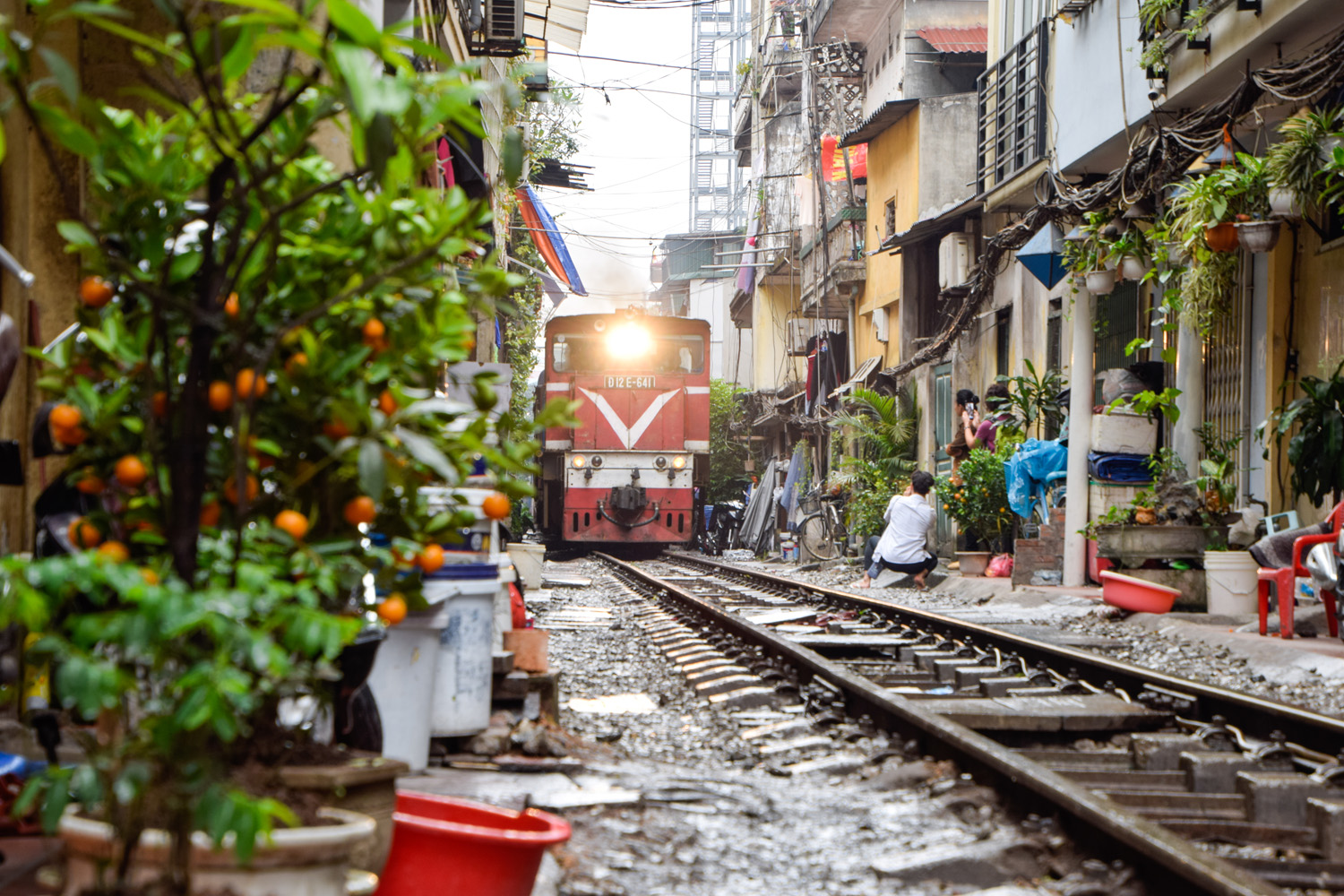
Train Street, Hanoi
4. Rural Vietnam
The image of a rural idyll, with verdant hills and rice paddies, is perfectly captured in the peaceful mountains of Mai Chau, which provides an escape from the bustling streets of Hanoi, four hours away. On our Rural Vietnam extension, catch a glimpse of local traditions and the lifestyle of a tribal community by visiting some of the local Tai Don villages to learn about their culture. Then walk along streams and take a ride on a bamboo raft downriver. You can also cycle through the village in the morning, taking in the picturesque landscape and the rhythms of local life. Visit a local hill tribe to learn about their way of life, including planting rice, herding buffalo, and building traditional houses.
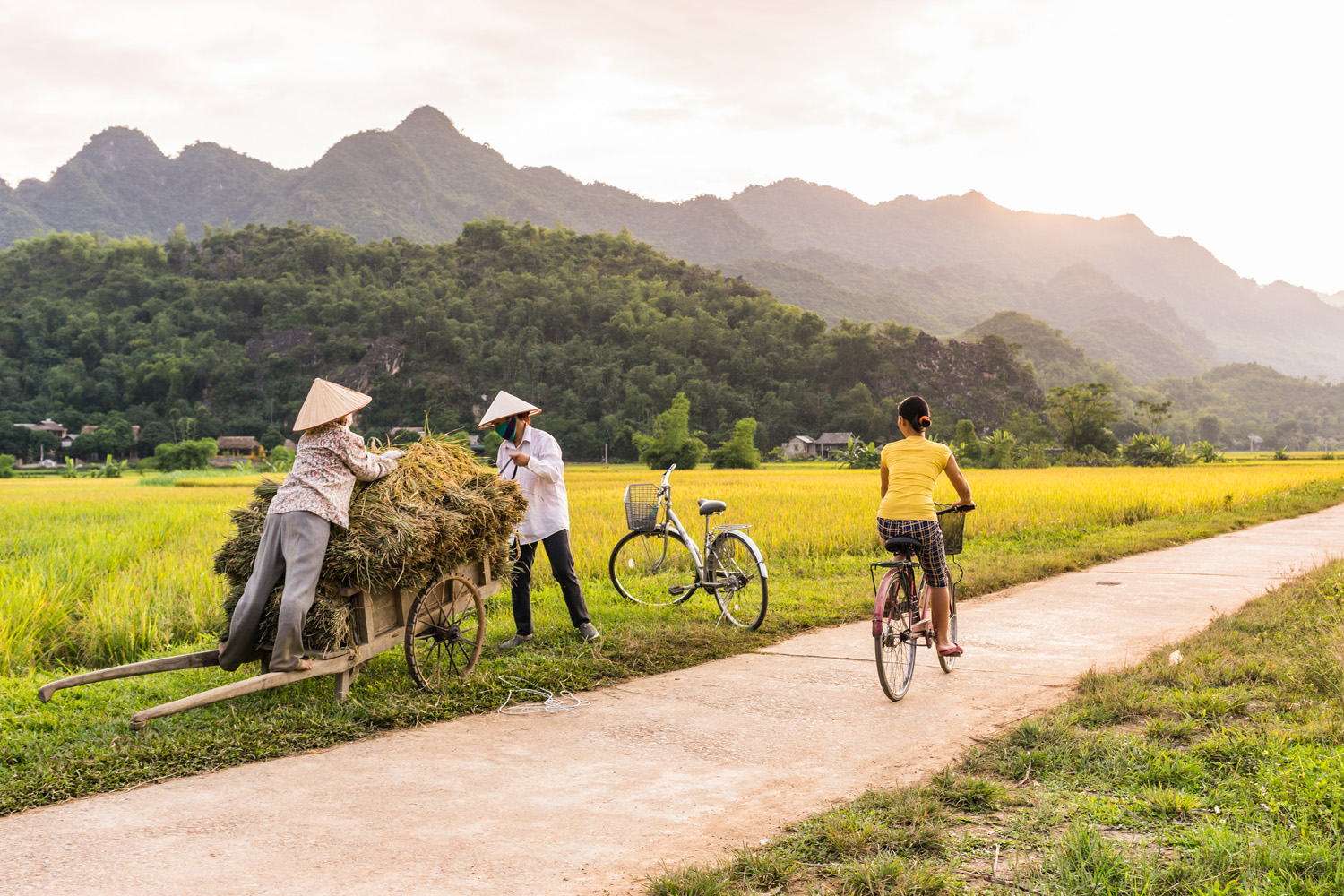
Lac Village, Mai Chau Village
5. Incredible Food and Drink
In between the sightseeing, try Vietnam’s delicious food, from street-side vendors to high-end restaurants. Vietnamese cuisine is a highlight, with dishes like pho (pronounced ‘fuh’) noodle soup, bhan mi and fresh spring rolls.
The food mainly focuses on herbal flavours, using fresh herbs like coriander, Thai basil and mint. For spicy food lovers, don’t worry, a jar of chilli oil is often served on the side of dishes so you can make your food as spicy as you are willing to risk.
Vietnamese coffee is very different to other coffee cultures. Coffee is served with condensed milk, rather than fresh milk, to sweeten the coffee and offset the bold flavour. Vietnamese drip coffee is also often accompanied by a cup of iced tea to cleanse your palate. For ardent coffee lovers, try Egg Coffee or Salt Coffee – tastier than they sound!
For those who enjoy a drink, Vietnam offers various craft beers and major Southeast Asian brews. An interesting aspect of Vietnamese beer culture is the common practice of drinking beer with ice.
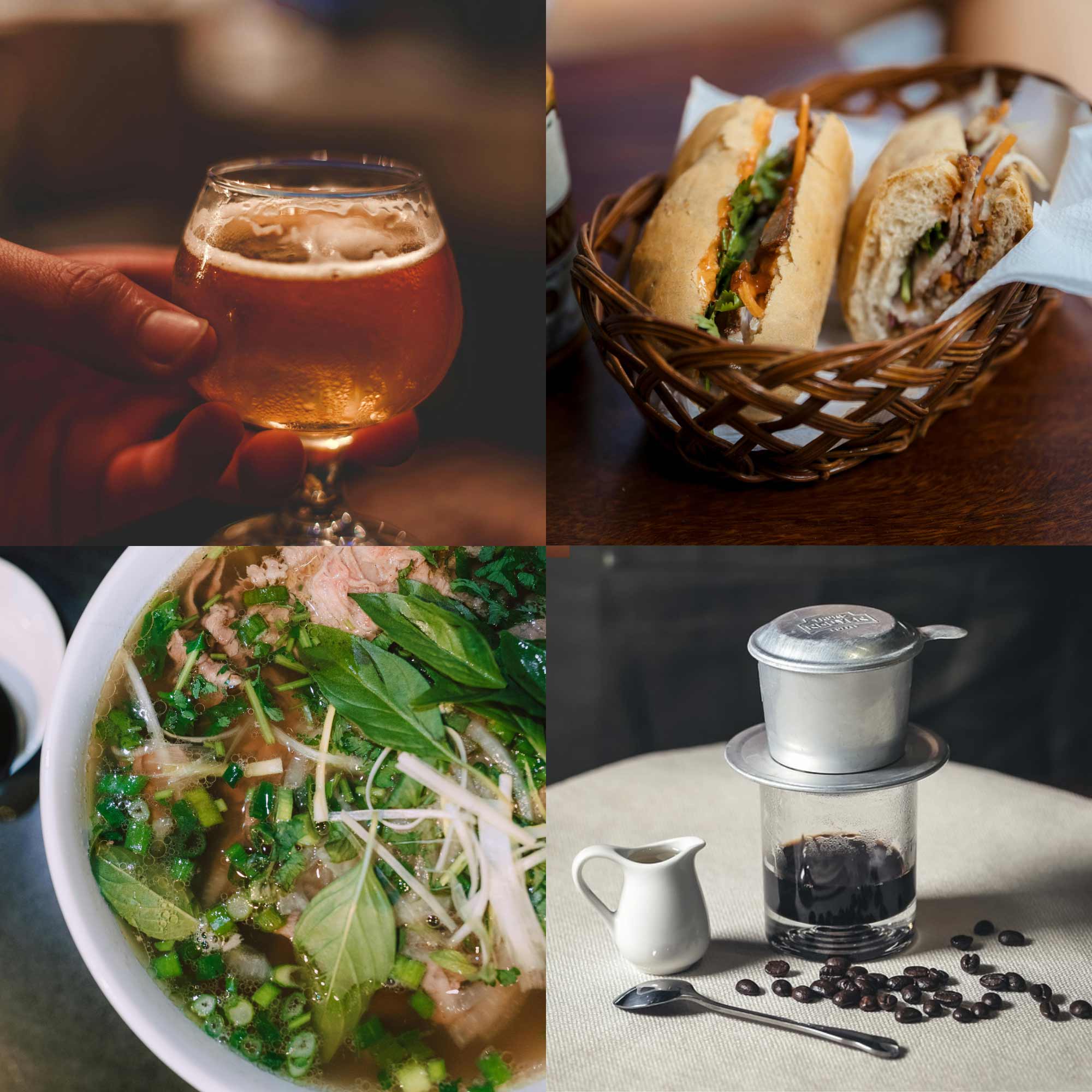
Food and Drinks, Vietnam
6. Hue and Hoi An
For anyone interested in history, the city of Hue is a goldmine of tombs, pagodas, castles and ruins. Located near the coast of central Vietnam, on the shores of the Perfume River, Hue was once Vietnam’s imperial capital. Founded in the early 17th century by Lord Nguyen Phuc Khoat due to its strategic position near the mountains and the sea, Hue gained prominence in 1802 when Emperor Gia Long, the first emperor of the Nguyen Dynasty, moved the capital from Hanoi to Hue. Over the next century, a complex of grand palaces, temples, and citadels was constructed within the Imperial City.
The journey from Hue to Hoi An, via the Hai Van Pass, is a spectacular stretch of mountain road, crossing mountain peaks and looking out over the East Vietnam Sea. This journey takes approximately three to four hours.
Hoi An, another UNESCO Heritage Site, is a charming city known for its ancient temples, bridges, and colourful lanterns. The riverside setting and historical architecture create a magical atmosphere, especially at night. Originally known as “Fai Fo”, Hoi An was an important trading port during the Champa Kingdom era. Its golden age came during the 16th and 17th centuries, serving as a vital hub for merchants from China, Japan, India, and Europe. Under the name “Hoi An”, it became a melting pot of cultures and a thriving commercial centre along the maritime Silk Road.
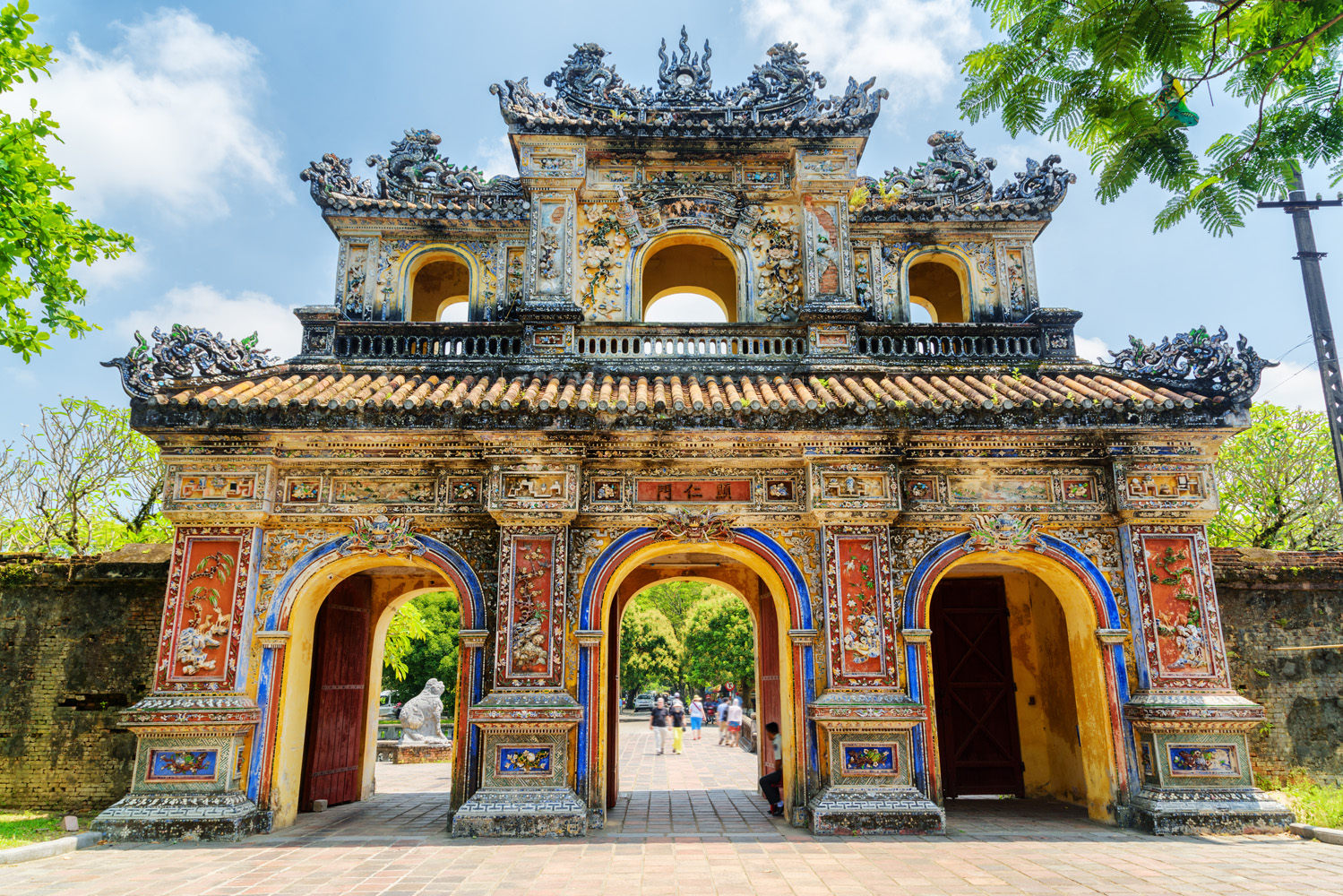
East Gate (Hien Nhon Gate)
7. Shopping
Vietnam is known for its vibrant markets and is an excellent place to buy colourful textiles, silks, clothing, and many other items. It is usually expected that you will bargain in private shops, and especially in markets, so don’t be afraid to haggle.
Hoi An, in particular, is also famous for its tailoring. You can browse the different shops and take home a unique piece of clothing made specifically for you for a fraction of the price you’d pay at home. The process usually involves meticulous measurements and multiple fittings, so if you are getting a suit or a dress made, make sure there’s enough time for it to be completed before you depart.
8. Great Value
Vietnam offers excellent value for money. From affordable local beer to cheap dinners, your money goes a long way. It is a budget-friendly destination.
9. Explore the Mekong Delta
The Mekong Delta, known as ‘the rice bowl of Vietnam’, is a leafy and fertile green area with famed waterways and floating markets. This trip is part of our Vietnam South to North + Mekong Delta holiday program. Here you will board a boat to explore rice paddies and tropical fruit fields and visit a family-run coconut farm to learn about their handmade coconut-based goods which have been produced for generations. Following this, you can choose to have either a bicycle or tuk-tuk tour of the village, followed by a traditional rowing boat ride through the narrow canals. You can expect to see tangled mangrove forests, lazy buffalo wading through the rivers, and floating markets selling fruit and freshly caught fish.
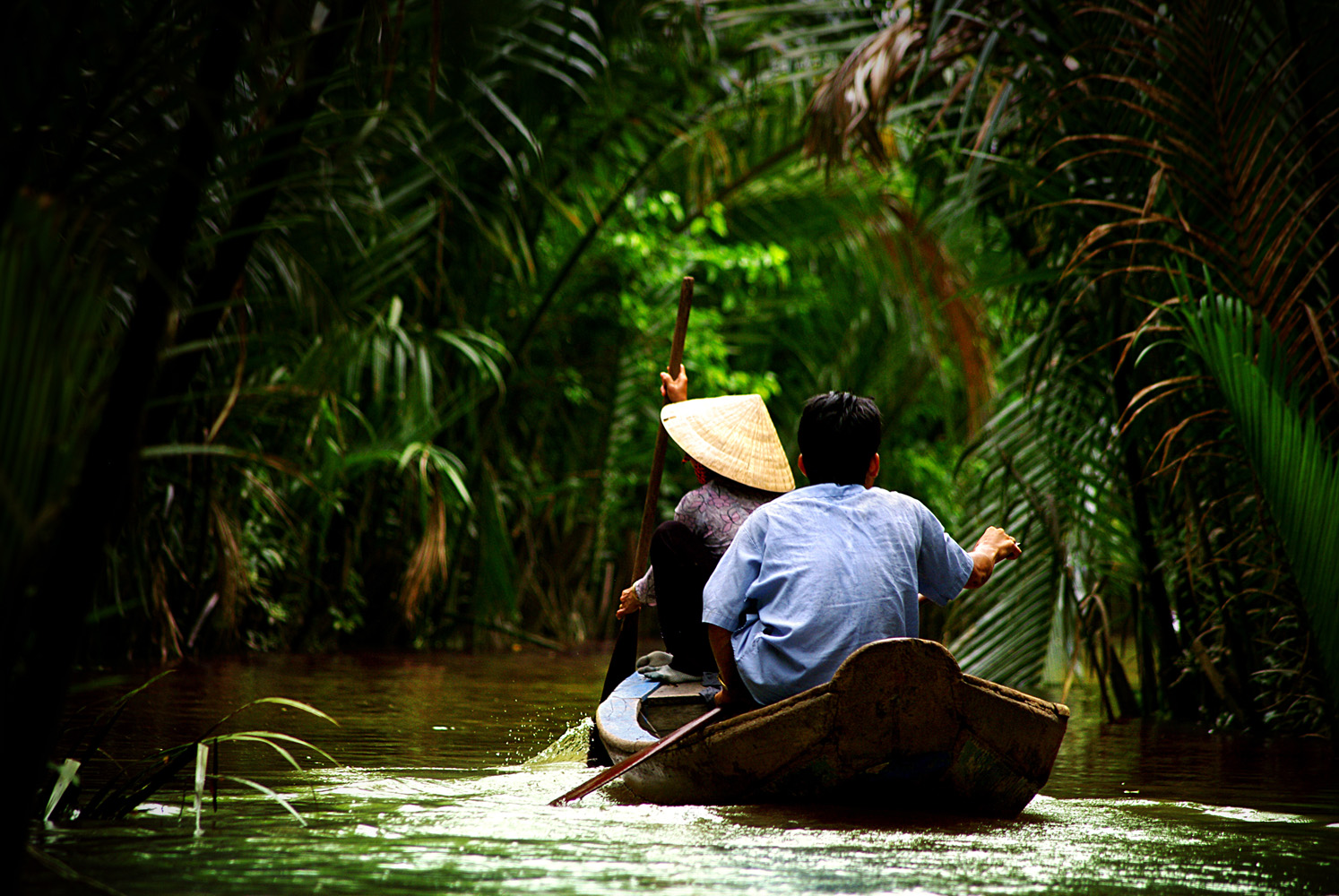
Mekong River boat
10. Hop Over to Cambodia or Laos!
If you’re considering a trip to Vietnam, why not add a stay in neighbouring Cambodia or Laos to your itinerary?
Cambodia is home to Angkor Wat, one of Southeast Asia's most iconic landmarks and part of the world's largest temple complex. In the heart of Cambodia's jungles, these temples showcase the grandeur of the Khmer Empire, which thrived from the 9th to the 15th centuries, with stunning architectural symmetry and intricate carvings. Angkor Wat is part of the larger Angkor complex, a vast network of over 1,000 temples covering an area the size of Paris.
You can also visit the mountains of northern Laos, staying in Luang Prabang, renowned for its rich cultural heritage and natural beauty. As the former royal capital of Laos, it boasts over 30 stunning temples and a blend of traditional Lao and French colonial architecture. Founded in the 14th century as the capital of the Kingdom of Lan Xang by King Fa Ngum, Luang Prabang thrived as a political and cultural centre. Although the capital moved to Vientiane in the mid-16th century, Luang Prabang remained an important spiritual and cultural hub.
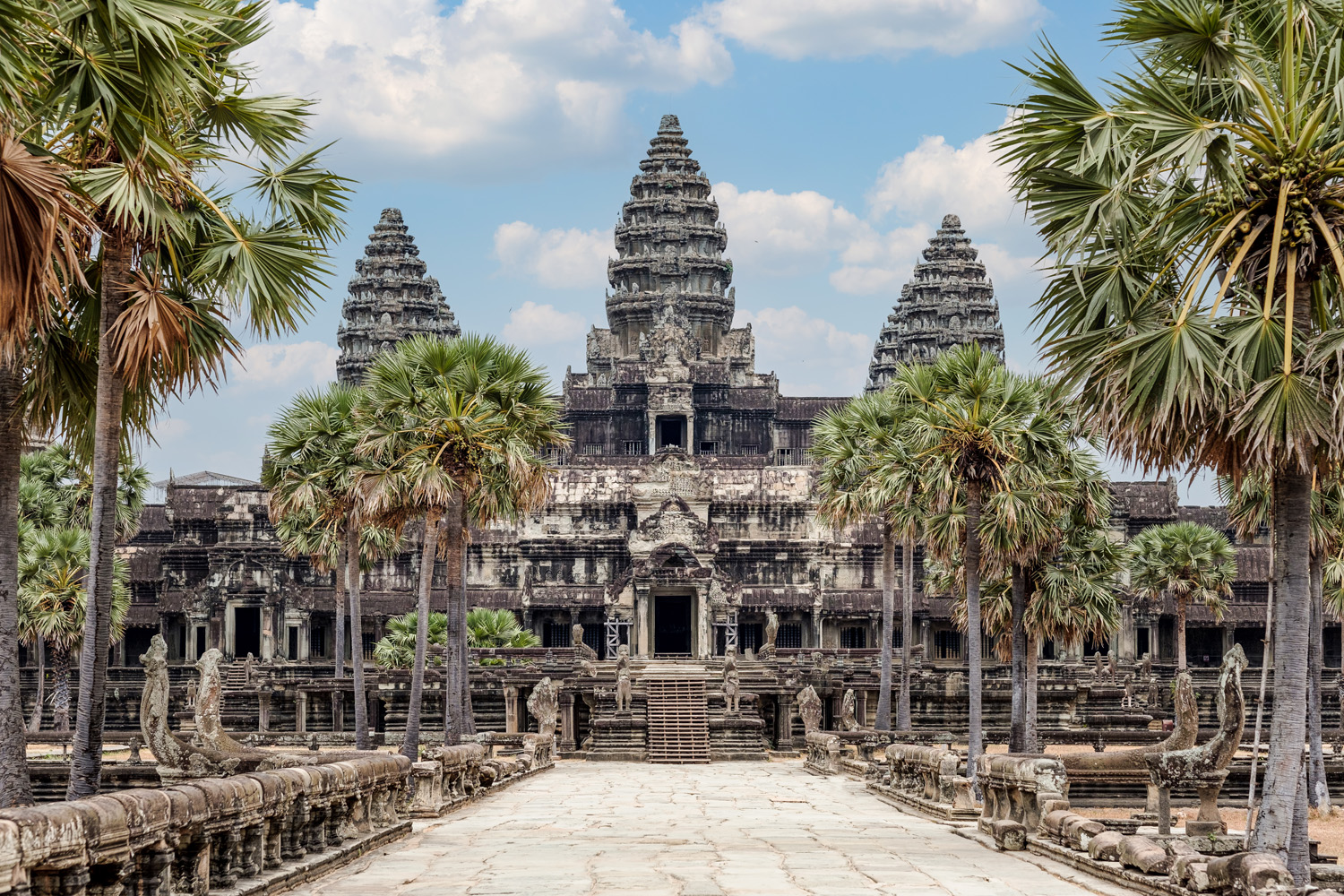
Angkor Wat, Cambodia
Our Vietnam experts would love to help you plan your holiday. Call us on 020 7263 3000 to find out more.
Found this blog useful? Sign up for our newsletter for more holiday tips and advice!
